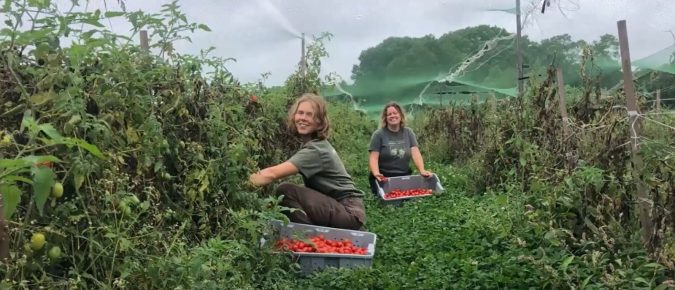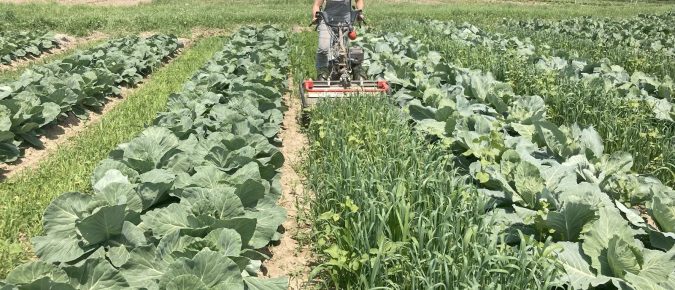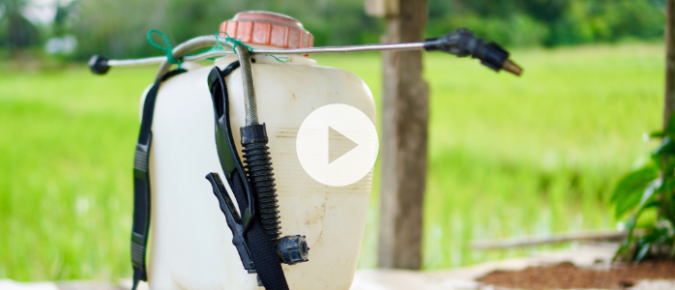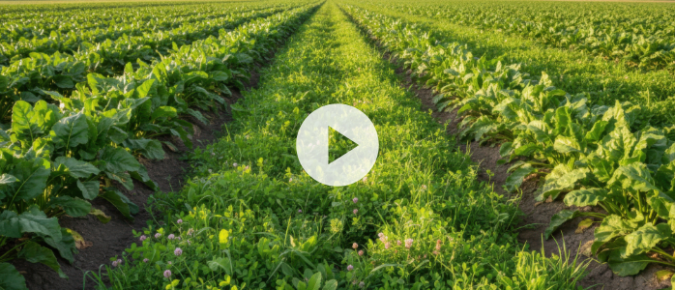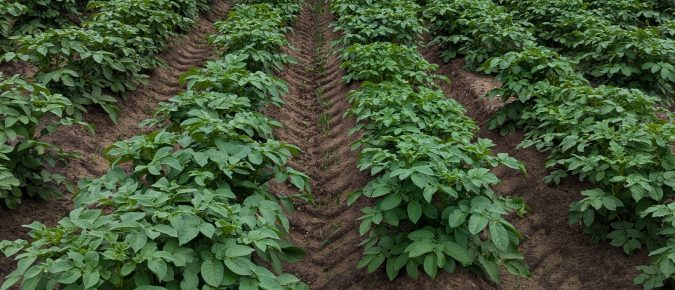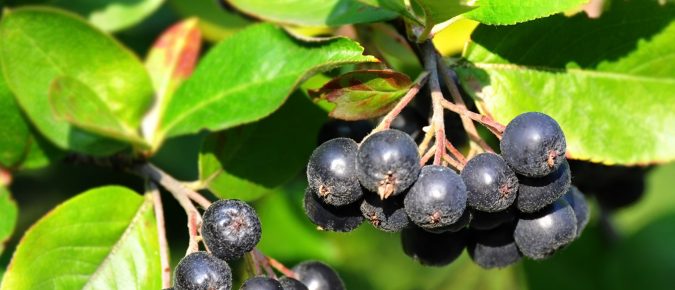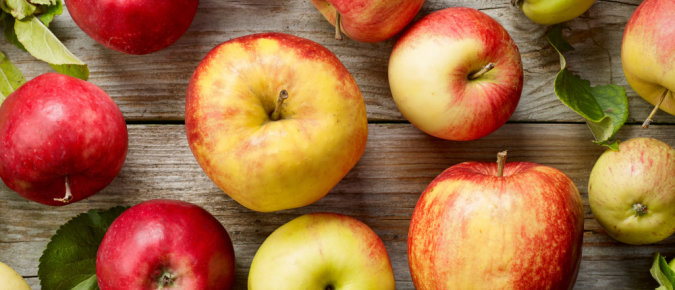Most farmers are familiar with the benefits of cover crops: they reduce erosion, improve soil health, and help suppress weeds. Cover crops are often incorporated into fields as part of crop rotations, but they can also be planted in the aisles between cash crop beds, providing cover during a time of year when the soil is typically bare. These “living aisles” add additional advantages, such as reducing mud during rainy periods, allowing farmers to access beds when the ground is wet, and keeping harvest bins cleaner. Depending on the species used, living aisles may also be allowed to grow into beds after harvest to provide winter cover.
Most farmers are familiar with the benefits of cover crops: they reduce erosion, improve soil health, and help suppress weeds. Cover crops are often incorporated into fields as part of crop rotations, but they can also be planted in the aisles between cash crop beds, providing cover during a time of year when the soil is typically bare. These “living aisles” add additional advantages, such as reducing mud during rainy periods, allowing farmers to access beds when the ground is wet, and keeping harvest bins cleaner. Depending on the species used, living aisles may also be allowed to grow into beds after harvest to provide winter cover.
Most farmers are familiar with the benefits of cover crops: they reduce erosion, improve soil health, and help suppress weeds. Cover crops are often incorporated into fields as part of crop rotations, but they can also be planted in the aisles between cash crop beds, providing cover during a time of year when the soil is typically bare. These “living aisles” add additional advantages, such as reducing mud during rainy periods, allowing farmers to access beds when the ground is wet, and keeping harvest bins cleaner. Depending on the species used, living aisles may also be allowed to grow into beds after harvest to provide winter cover.
Most farmers are familiar with the benefits of cover crops: they reduce erosion, improve soil health, and help suppress weeds. Cover crops are often incorporated into fields as part of crop rotations, but they can also be planted in the aisles between cash crop beds, providing cover during a time of year when the soil is typically bare. These “living aisles” add additional advantages, such as reducing mud during rainy periods, allowing farmers to access beds when the ground is wet, and keeping harvest bins cleaner. Depending on the species used, living aisles may also be allowed to grow into beds after harvest to provide winter cover.
This article walks through the different parts of and considerations around calibrating and using a backpack sprayer in diversified vegetable systems.
This article walks through the timing, tools, and methods for seeding cover crops in diversified vegetable crop systems.
Dr. Mallika Nocco and Water Talk co-hosts have a conversation with Dr. Leslie Holland, University of Wisconsin–Madison assistant professor and extension fruit crop pathologist, and Dr. Amaya Atucha, University of Wisconsin–Madison professor and extension fruit crops specialist, about cranberry production, water use, recycling, and enjoyment.
This self-paced training aid includes videos and additional linked resources aimed at walking new participants to the industry through basic production and Integrated Pest Management (IPM) options for potatoes grown in Wisconsin.
This week we will hear about Gwenyn Hill Farm’s (Waukesha) peach, elderberry, apples and Asian pear harvest.
This week we will hear about Gwenyn Hill Farm’s (Waukesha) currant, Duchess of Oldenberg apple, day-neutral strawberry, and raspberry harvests.
This week we will hear about Gwenyn Hill Farm’s (Waukesha) plum curculio and codling moth management and the effects of recent precipitation.
This week we will hear about Gwenyn Hill Farm’s (Waukesha) plum curculio and codling moth management and the effects of recent precipitation.

